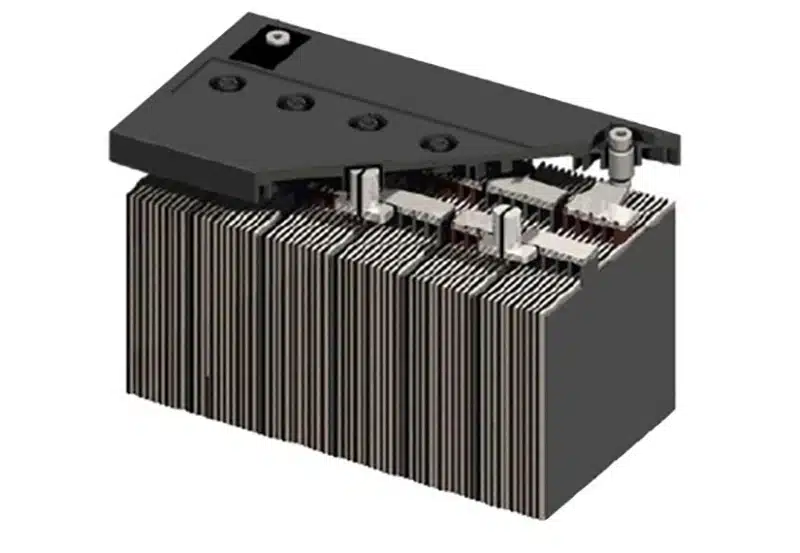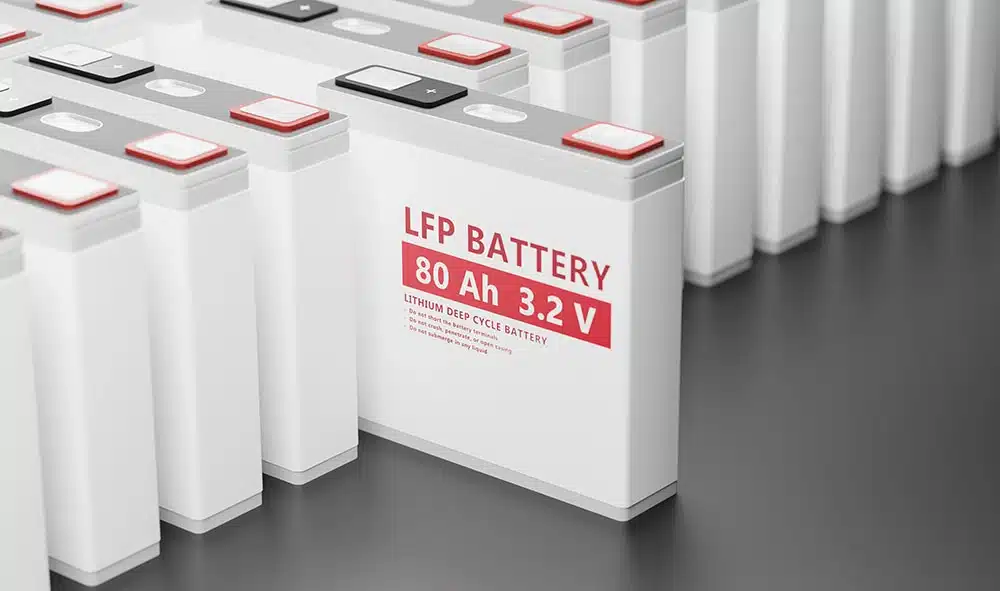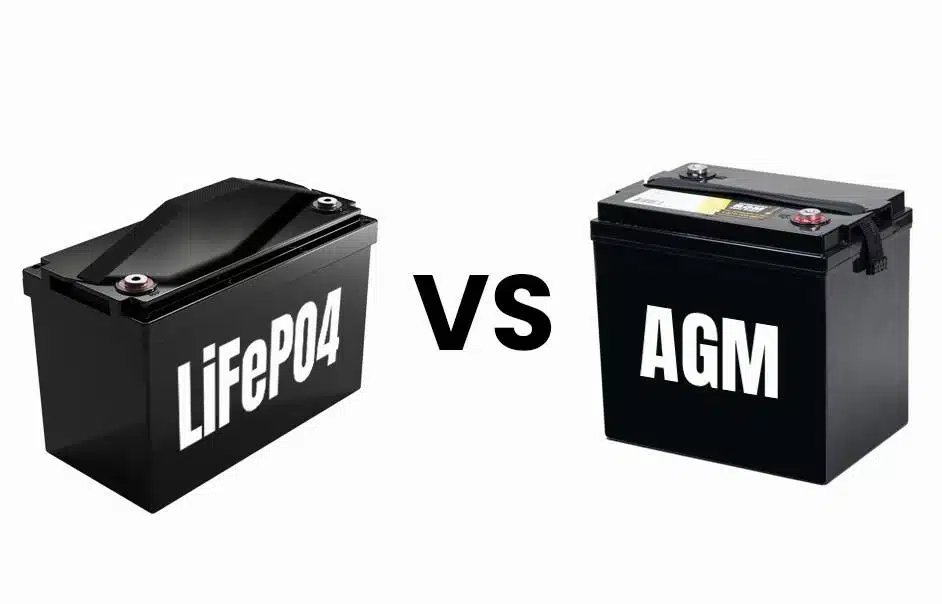Want to know which one is better for you, lithium battery or AGM battery? Don’t worry, this article will give you a detailed comparison and help you make a wise choice. We will tell you the difference between these two batteries in the simplest way, so that you don’t have to worry about batteries anymore! Are you also confused when choosing a battery? Don’t worry, this article will take you to a deep understanding of AGM batteries and lithium batteries, so that you can easily make the best choice.
Last updated: May 2025 | Estimated reading time: 7 minutes
Table of Contents
ToggleWhat is AGM battery?

AGM (Absorbent Glass Mat) battery is an economical and mature lead-acid battery with electrolyte absorbed in glass fiber mat. It has the advantages of maintenance-free, leak-proof, vibration-resistant, multi-angle installation and fast charging, but has low energy density and short cycle life.
What is LiFePO4 lithium battery?

LiFePO4 battery is an advanced lithium-ion battery known for its high energy density, long cycle life, high safety, light weight and high charging efficiency, but the initial cost is relatively high.
Key performance indicators comparison

| Metric | AGM Battery | LiFePO4 Lithium Battery |
|---|---|---|
| Energy Density | Lower (50-70 Wh/kg) | Higher (90-160 Wh/kg, up to 210 Wh/kg for high quality) |
| Cycle Life | Lower (Typically 200-500 cycles) | Higher (Typically 2000-5000 cycles or more) |
| Charge/Discharge Efficiency | Lower (70-80%) | Higher (92-98%) |
| Weight | Heavier | Lighter |
| Self-Discharge Rate | Higher (4-6% per month, up to 20% for some lead-acid) | Lower (2-3% per month) |
| Depth of Discharge (DoD) | Lower (Recommended 50%) | Higher (Up to 80% or even higher) |
LiFePO4 batteries are superior to AGM batteries in terms of energy density, cycle life, weight and deep discharge capability, but are higher in initial cost. AGM batteries are known for their lower cost and mature technology.
Cost comparison
- Initial cost: AGM batteries generally have a lower initial cost than LiFePO4 batteries. A 100Ah AGM battery might cost around $200-300, while a LiFePO4 battery of the same capacity might cost $500-800.
- Long-term use cost: Considering the cycle life and maintenance cost, the long-term use cost of LiFePO4 lithium battery may be lower. If the cycle life of AGM battery is 300 times, and the cycle life of LiFePO4 battery is 3000 times, you need to replace the AGM battery 10 times to reach the service life of LiFePO4 battery. Even if the initial cost of LiFePO4 battery is 2-3 times that of AGM battery, the total cost may be lower. Because AGM battery requires regular maintenance and labor replacement cost.
Application comparison
RV/Camping: LiFePO4 lithium batteries are more suitable for RV/camping vehicles with weight and space requirements. A RV equipped with solar panels can provide longer driving range with LiFePO4 batteries and reduce dependence on external power sources. For more RV battery solutions, please visit our RV lifepo4 battery.
Solar energy storage system: LiFePO4 lithium batteries are ideal for solar energy storage systems due to their long cycle life and high energy density. A remote mountainous area in western China uses LiFePO4 batteries for energy storage, achieving nighttime lighting and basic electricity needs, significantly improving the quality of life. For more information on solar energy storage, please visit solar light battery.
Marine applications: The light weight and high energy density of LiFePO4 lithium batteries give them advantages in marine applications. A yacht that originally used 1 ton of AGM batteries can be reduced by 500 kg to 670 kg after replacing them with LiFePO4 batteries, and the cruising range can be increased by 20% to 50%.
Motorcycle: LiFePO4 lithium battery can provide higher starting current and longer service life.
Car starting: AGM batteries are still a common choice for car starting batteries, especially in vehicles with start-stop functions. But LiFePO4 lithium batteries are also beginning to appear, reducing the trouble of car owners parking their cars in the garage for a long time and reducing the trouble of their cars not starting.
Backup Power (UPS): AGM batteries are commonly used in uninterruptible power supply systems to ensure that critical equipment can operate during power outages, such as hospitals, office buildings, schools, factories, etc.
Electric wheelchairs and scooters: AGM batteries are a reliable power source for electric wheelchairs and scooters, and many brands are beginning to choose lifepo4 batteries, such as Hoveround.
How to choose the right battery
Prioritize key features based on your needs: For example, if weight and space are key factors, then a LiFePO4 lithium battery may be a better choice. If cost is the primary consideration, then an AGM battery may be more appropriate.
Consider your budget: Determine what budget you can afford.
Consider the usage environment: Consider the environment in which the battery will be used, such as temperature and humidity.
Consider cycle life: If the application requires frequent charging and discharging, the longer cycle life of LiFePO4 lithium batteries may be more advantageous.
Consider safety: LiFePO4 batteries are generally considered safer, especially in applications where safety is a high priority.
Some practical tips and suggestions for users as below:
RV Application: Choose LiFePO4 batteries with low temperature protection to ensure normal operation in cold environments.
Solar Energy Storage: Make sure the battery management system (BMS) is compatible with your solar inverter for optimal charging efficiency and protection.
Marine Applications: Choose LiFePO4 batteries with a waterproof rating to prevent corrosion from seawater.
Conclusion
AGM batteries and LiFePO4 lithium batteries have their own advantages and disadvantages. AGM batteries have lower cost and higher reliability, but lower energy density and shorter cycle life. LiFePO4 lithium batteries have higher energy density and longer cycle life, but higher cost. We at Hongyitai mainly produce 12V~48V LFP batteries, which are widely used to replace traditional AGM and lead acid batteries. Click more for more models.
FAQs
LiFePO4 lithium batteries are generally considered safer because they are not prone to thermal runaway.
It is not recommended to fully discharge an AGM battery as this will shorten its lifespan.
Yes, LiFePO4 lithium batteries require a dedicated charger. It is not recommended to charge them with AGM chargers.
